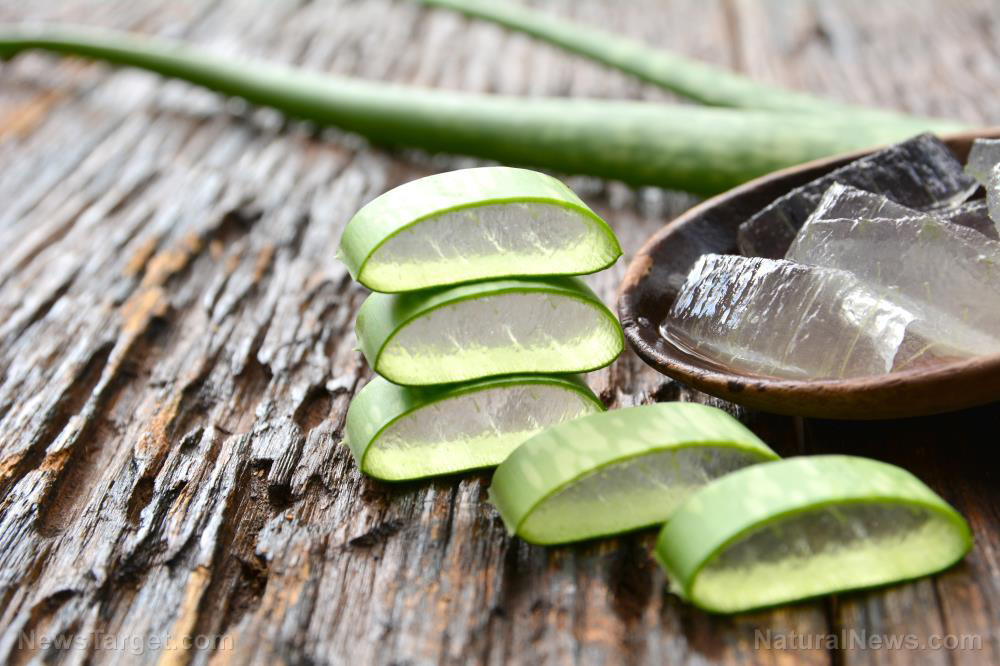Your health can deteriorate quickly if you don’t improve your indoor air quality
04/22/2020 / By Arsenio Toledo

By the end of the month, billions of people around the world would have been affected by full or partial lockdowns due to the global COVID-19 pandemic. This means that more people are spending their time indoors. While this does reduce their chances of contracting coronavirus, this does bring to light another issue – the air quality inside their homes.
Interior designers all over the United States have been worried about indoor air quality since before COVID-19 made everybody stay home. Much of their effort was focused on counteracting the consequences of “off-gassing,” where harmful chemicals known as volatile organic compounds (VOCs) like benzene and formaldehyde release airborne particulates that can potentially be detrimental to your health. Unfortunately, these gasses can pass by almost undetected in your home.
VOCs can kill you if left unaddressed
According to the Environmental Protection Agency (EPA), VOCs can come from a variety of sources, such as:
- Building materials and home furnishings
- Solvents
- Wood preservatives
- Aerosol sprays
- Cleansers and disinfectant products
- Air fresheners and moth repellents
- Hobby supplies
- Dry-cleaned clothing
- Pesticides
The EPA further states that, if the source of the VOCs that are affecting your indoor air quality aren’t immediately addressed, they can cause a variety of serious health conditions. They can wreak havoc on your immunity, respiratory and cardiovascular health and, in worst cases, it may even cause cancer.
According to a study done by the EPA, concentrations of pollutants like VOCs are two to five times higher indoors. With Americans now spending nearly 100 percent of their time inside their homes, the risk of developing health conditions due to poor indoor air quality is increasing.
Fortunately, interior designers are saying that whole-home air purifiers have, in recent years, become adept at detecting and combating VOCs. Many advanced filters can trap even the tiniest airborne pollutants. If your home has a whole-home air purifier and if it’s integrated into your heating, ventilation and air-conditioning (HVAC) systems, then you’re better off than many other people.
Natural ways to purify indoor air
However, if you don’t have the capacity to invest in air purifiers and other HVAC systems, there are still ways that you can purify your indoor air. Here are eight other ways to improve indoor air quality.
- Regularly clean your home – Perhaps the best way to make sure the quality of the air in your home doesn’t deteriorate is to clean on a regular basis. Vacuuming the floor won’t be enough. You have to clean your walls, upholstered furniture and any other surfaces in your home that can collect dust. Don’t forget that you need to regularly change out your bed sheets and pillow cases. Don’t forget to also check on the filters in your air conditioners, heaters, furnaces and even the dirt bag in your vacuum cleaner.
- Increase ventilation – Aside from cleaning your home, installing HVAC systems that can clean your air can also work wonders. Other than that, you should consider installing trickle vents, which are very small openings in your window that can recycle and purify indoor air; or exhaust fans which can pull air out from a room. Exhaust fans and trickle vents are particularly useful for kitchens, especially if you’re using a gas stove that can produce unhealthy levels of nitrogen dioxide.
- Get rid of your carpet – Your carpet may be introducing toxins and VOCs into your home without your knowledge. A lot of chemicals are used in the manufacturing and dry cleaning of carpets, so VOCs like formaldehyde may remain once they’ve been installed in your home. Furthermore, carpets can also trap dirt, dust mites and other pollutants that can also wreak havoc on your overall well-being.
- Keep activated charcoal around your home – Activated charcoal is a highly absorbent substance that can eliminate toxins and odors in your home. Having activated charcoal in pouches or bags strategically placed around your home can easily improve indoor air quality.
- Use more essential oils – When used in aromatherapy, essential oils like tea tree, rosemary, oregano, lemon and cinnamon can kill viruses, bacteria, fungi and mold.
- Grow some indoor plants – Plants are nature’s air purifiers. Houseplants can effectively purify and rejuvenate air, potentially saving you from VOCs. It’s recommended that you have one plant for every 100 square feet of space in your home, although it wouldn’t hurt to have more.
- Use a salt crystal lamp – A Himalayan pink salt lamp can pull and neutralize toxins from the environment. This includes airborne irritants, allergens and pathogens. Having a salt crystal lamp in your room is a great way to reduce your risk of getting sick from VOCs.
- Use beeswax candles – Beeswax candles can improve indoor air quality by ionizing the air and neutralizing toxic compounds and contaminants around you. They can even remove common allergens like dust from the air.
Keeping yourself safe from VOCs can be easy if you follow a strict cleaning schedule and use items that can improve air quality like essential oils, activated charcoal and houseplants.
To learn more about the effects of poor indoor air quality, check out the articles at Pollution.news.
Sources include:
Tagged Under: air purifiers, air quality, coronavirus, covid-19, Flu, immune system, indoor air, infections, lockdown, outbreak, pandemic, quarantine, respiratory health, superbugs, virus, VOCs, volatile organic compounds



















